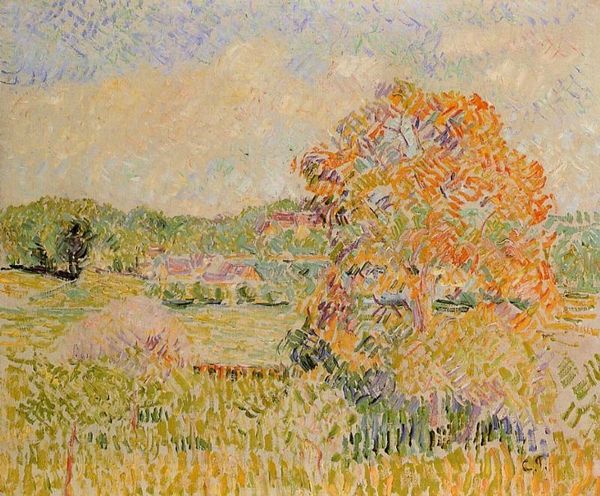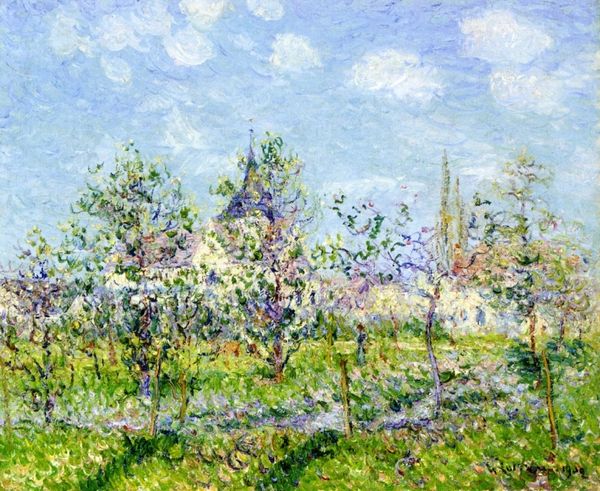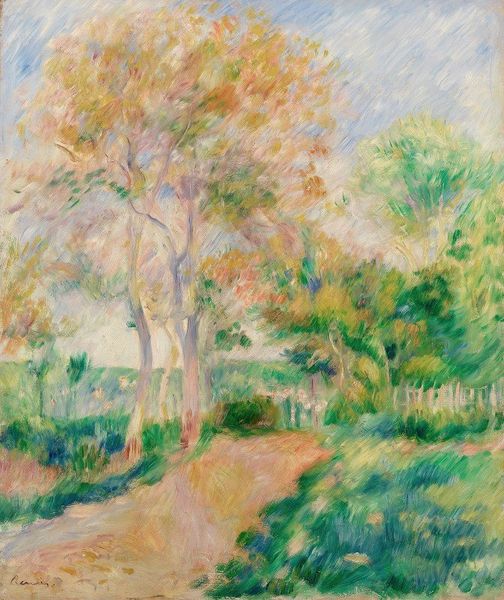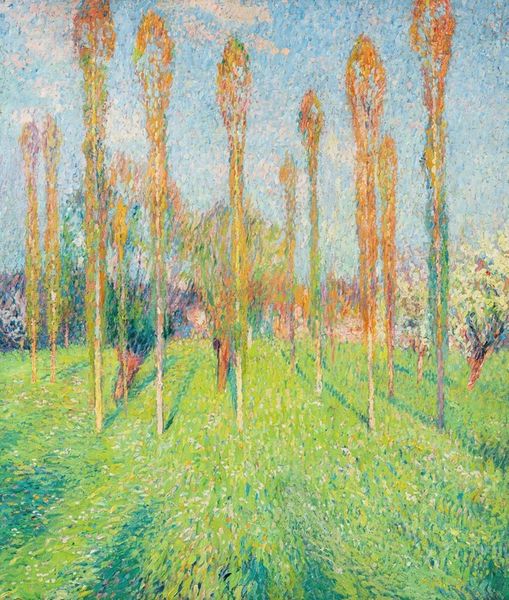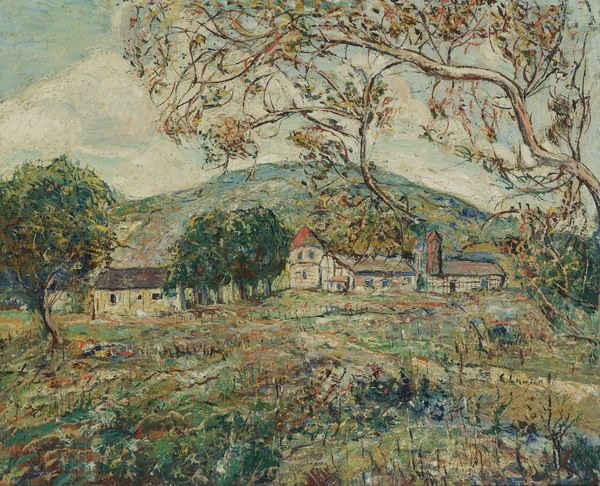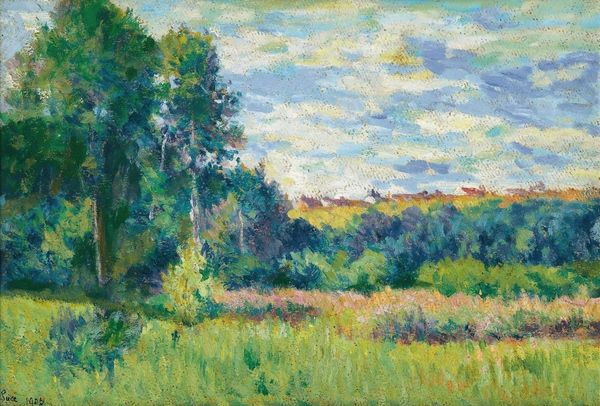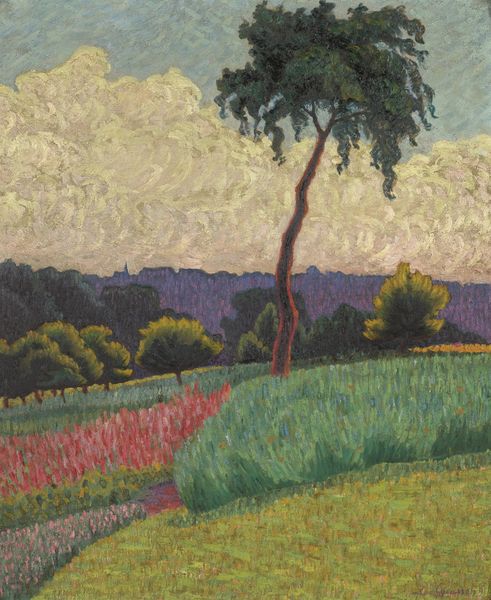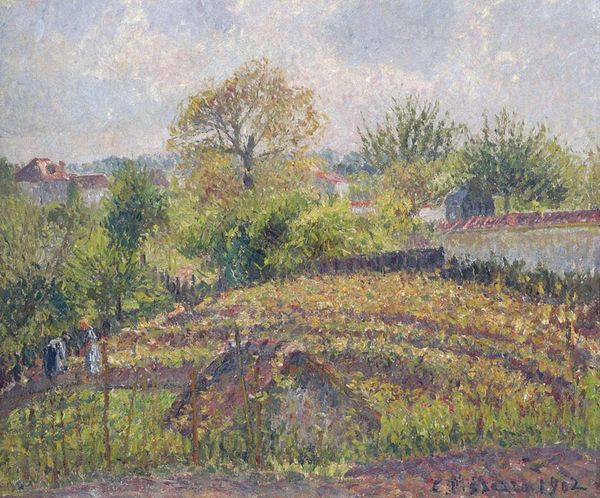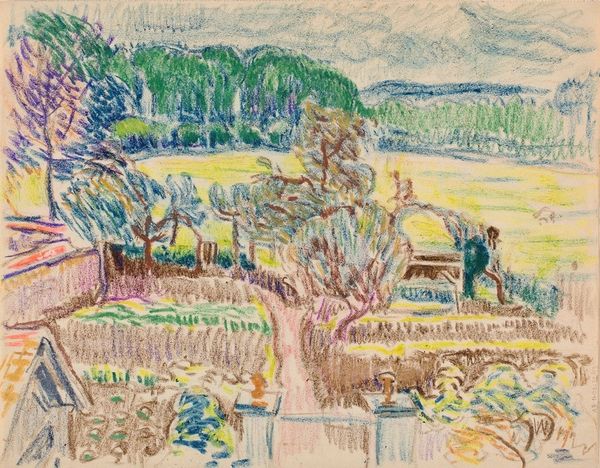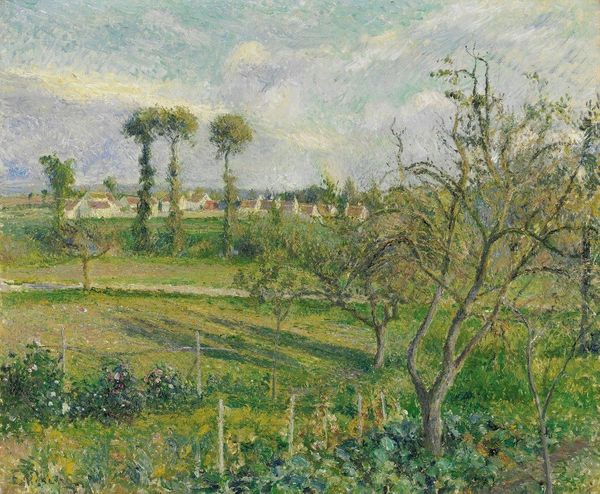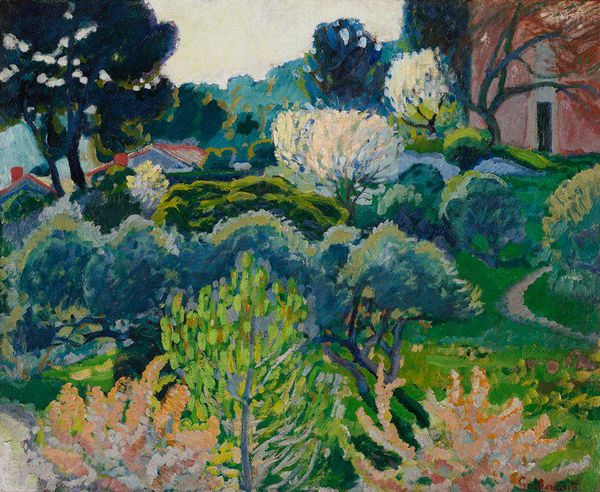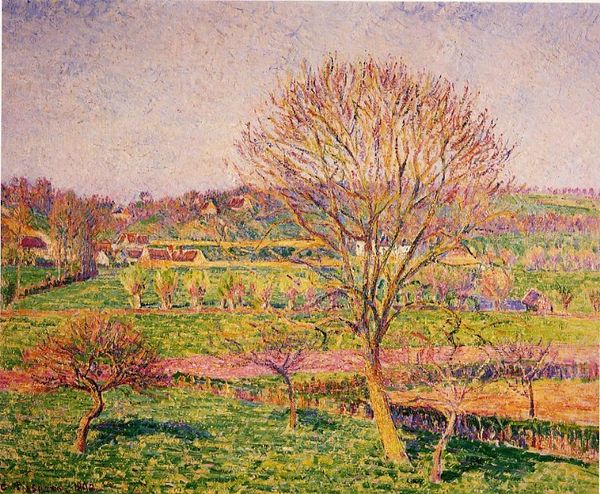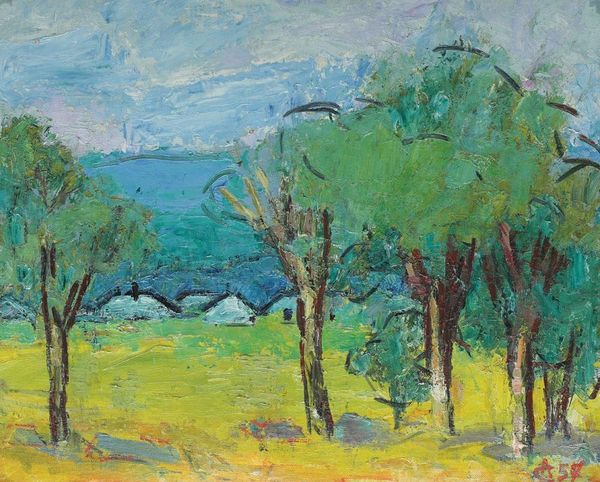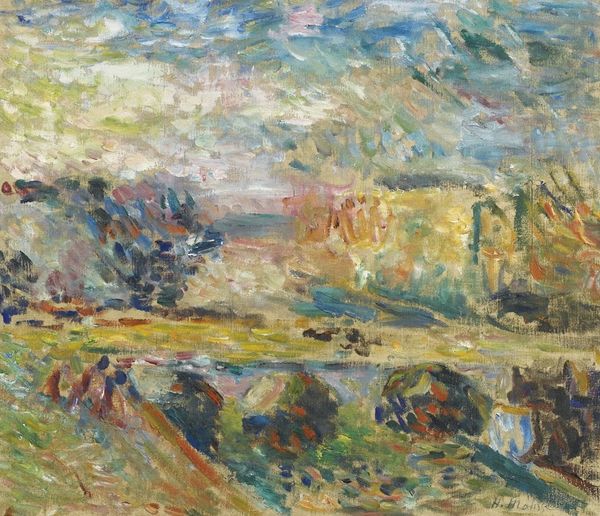
painting, plein-air, oil-paint
#
painting
#
impressionism
#
impressionist painting style
#
plein-air
#
oil-paint
#
landscape
#
impressionist landscape
#
seascape
#
post-impressionism
#
impressionist inspired
Copyright: Public Domain: Artvee
Curator: Camille Pissarro’s "Le Grand Noyer à Éragny, Automne," dating from around 1890, depicts an autumn scene at Éragny. Look closely at his brushwork. Editor: It’s dazzling! My initial impression is of light fracturing everywhere. The paint application seems almost haphazard, and yet there’s such vibrant depth. Curator: Yes, the fractured brushstrokes are central to Impressionism. Pissarro, though often described as a 'father figure' within the movement, here almost seems to push its boundaries, leaning toward the more scientific applications that come to fruition with the next generation and neo-impressionism. Editor: Absolutely. Look at how he builds the form of the large walnut tree; each dab of colour exists almost independently. What about the impact of working ‘en plein air’ on Pissarro’s creative process, and consequently the viewer's experience? Curator: The immediacy of painting outdoors was critical. Pissarro aimed to capture the fleeting effects of light and atmosphere directly. Éragny became his laboratory and also was more broadly a politically conscious embrace of rural community at a time of rapid industrialization and urbanization. Editor: I'm intrigued by the material texture here too. Oil paint allows for such a tactile, built-up surface. The labour is visible, isn’t it? It speaks to a slower, more deliberate process in contrast to our machine-dominated existence, reinforcing the political aspect you've mentioned. Curator: Indeed. The painting becomes an artifact, embedding a socio-political position beyond just idyllic aesthetics. The rise of the art market saw landscapes becoming increasingly desirable. Yet Pissarro maintains an element of radical intent. Editor: So this painting is a confluence of observational, artistic and social choices all working together, pushing boundaries as Impressionism was starting to take hold. Curator: Exactly. It stands as an artistic record and as an observation about a moment in time within the wider world, the position of the artist, the role of paint. Editor: Pissarro is inviting us not just to observe but also to think about labour, land, and light. Curator: It's a work to keep turning over in one's mind and let the subtleties resonate.
Comments
No comments
Be the first to comment and join the conversation on the ultimate creative platform.
